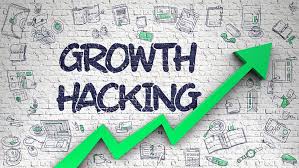
Marketing Automation: Streamlining Your Campaigns
Discover how marketing automation can revolutionize your business efficiency and skyrocket campaign success.
Understanding Marketing Automation: The Basics and Benefits
Marketing automation refers to the use of software and technology to streamline, automate, and measure marketing tasks and workflows. It allows businesses to target customers with automated messages across email, web, social, and text. The key benefits include increased efficiency, improved customer experience, and better data management.
By implementing marketing automation, businesses can save time on repetitive tasks, allowing their marketing teams to focus on more strategic initiatives. Additionally, automation can enhance lead nurturing, segmentation, and personalization, leading to higher conversion rates and customer retention.
Choosing the Right Marketing Automation Tools for Your Business
Selecting the appropriate marketing automation tools is critical for maximizing the potential benefits. Businesses should consider their specific needs, budget, and integration capabilities when evaluating different options. Popular tools include HubSpot, Marketo, and Mailchimp, each offering distinct features and pricing models.
It's important to assess the scalability of the tool, its ease of use, and the level of customer support provided. Conducting a thorough analysis and possibly a trial period can help ensure that the chosen tool aligns with your business objectives and can grow with your company.
Integrating Marketing Automation into Your Overall Strategy
For marketing automation to be effective, it must be seamlessly integrated into your overall marketing strategy. This involves aligning automation efforts with your business goals, target audience, and existing marketing campaigns. Consider how automation can support your content marketing, social media, and email marketing strategies.
Developing a detailed plan that outlines the workflows, segmentation criteria, and communication triggers is essential. Regularly reviewing and adjusting this plan based on performance metrics and feedback will help ensure that your automation efforts remain aligned with your strategic objectives.
Optimizing Campaign Performance with Automation Techniques
Once marketing automation is in place, optimizing campaign performance becomes a continuous process. Techniques such as A/B testing, segmentation, and personalization can significantly enhance the effectiveness of your automated campaigns. Utilize data and analytics to understand what resonates with your audience and make data-driven decisions to improve engagement.
Automation also enables real-time adjustments to campaigns, ensuring that you can respond quickly to changing market conditions or customer behaviors. By regularly monitoring performance and experimenting with different approaches, you can maximize the impact of your marketing efforts.
Measuring Success: Analytics and Insights from Automated Campaigns
Measuring the success of automated campaigns is crucial for understanding their impact and identifying areas for improvement. Key metrics to track include open rates, click-through rates, conversion rates, and ROI. Marketing automation tools typically offer robust analytics features that provide deeper insights into campaign performance.
Analyzing this data helps you identify trends, optimize future campaigns, and demonstrate the value of your marketing efforts to stakeholders. Regularly reviewing these insights and adjusting your strategies accordingly will ensure continuous improvement and sustained success.
.png?width=985&height=253&name=codkdops-one-color%20(1).png)











